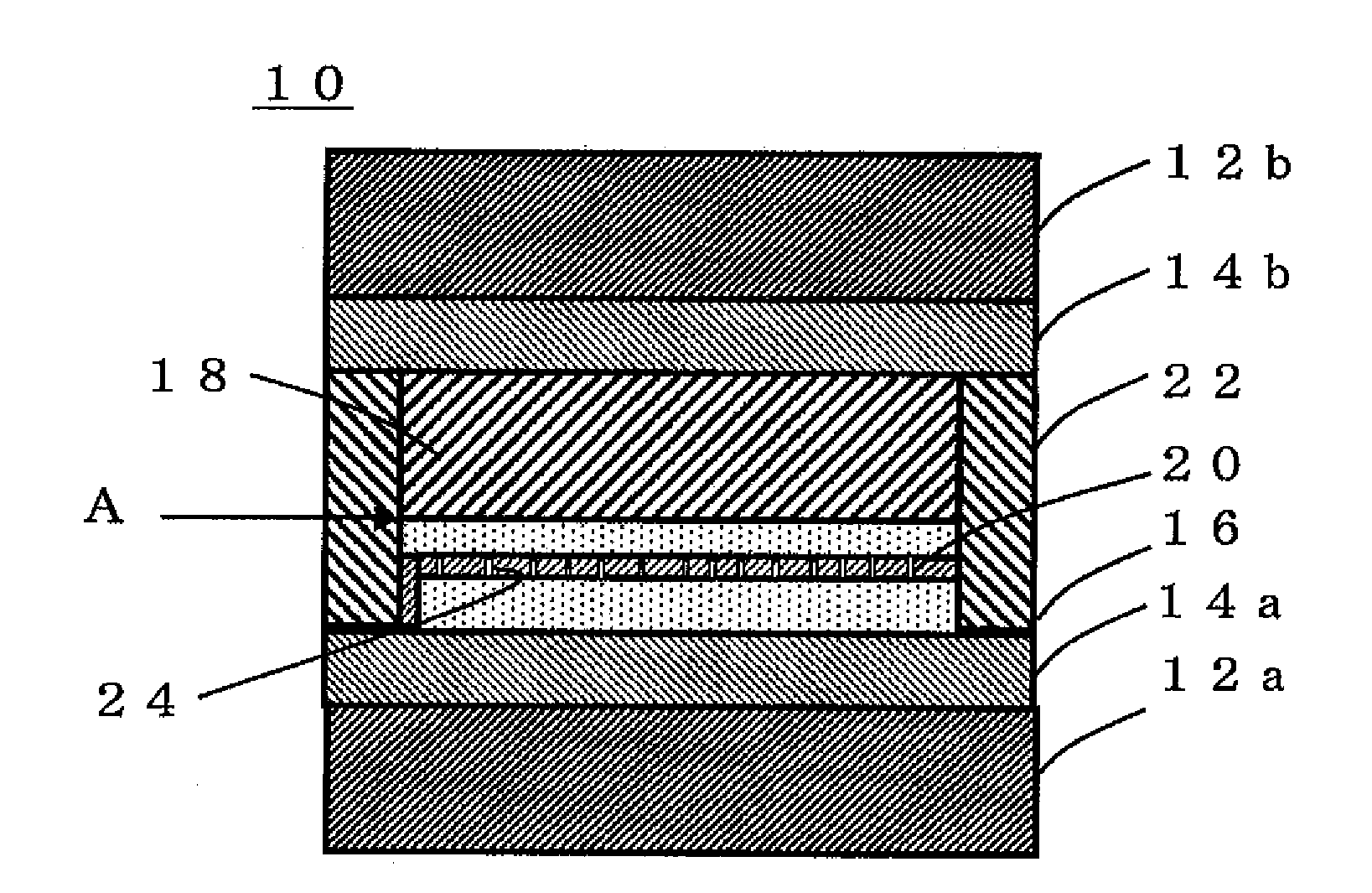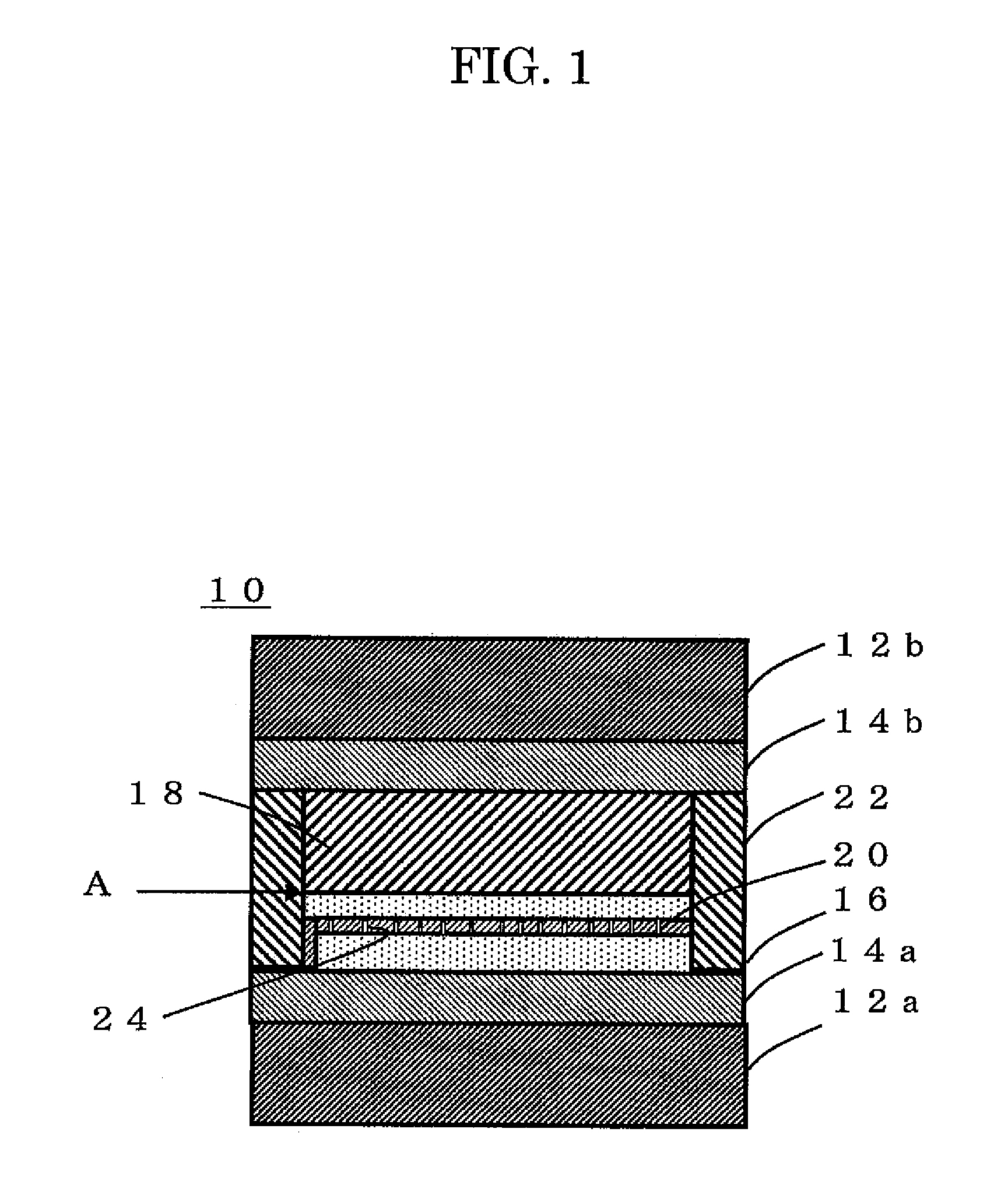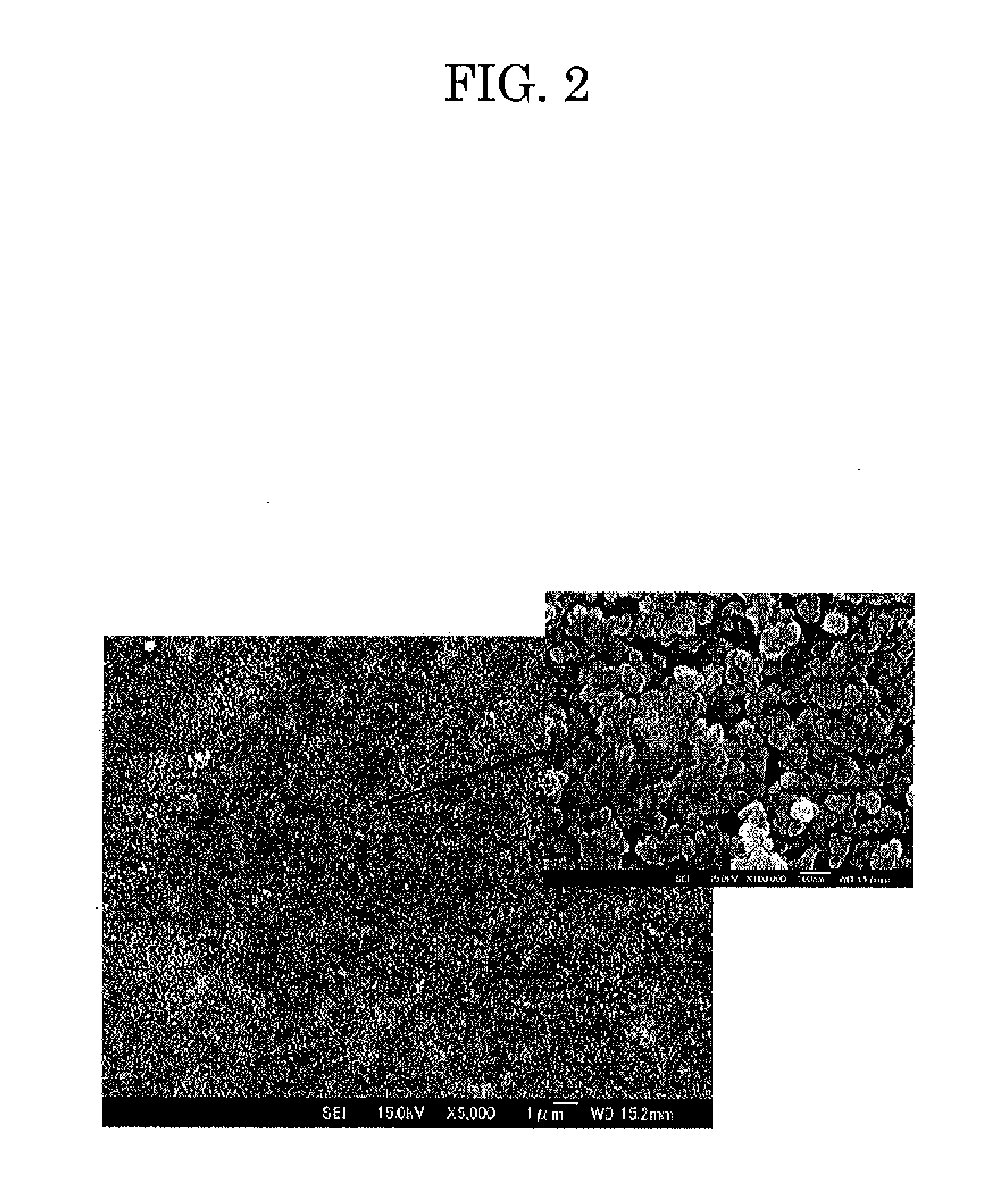Dye-sensitized solar cell and process for producing the same
a solar cell and dye sensitization technology, applied in the field of dye sensitization solar cell and a process for producing the same, can solve the problems of increasing the thickness of the porous semiconductor layer, complex and costly, and the process is not suitably applicable in the case of porous semiconductor layer thickness exceeding 13 m, and achieves high conversion efficiency
- Summary
- Abstract
- Description
- Claims
- Application Information
AI Technical Summary
Benefits of technology
Problems solved by technology
Method used
Image
Examples
examples
[0064]The present invention will be further described by Examples and Comparative examples. It is to be understood that Examples below are not intended to limit the present invention.
examples 1 to 4
[0065]Borosilicate glass with a transparent conductive film 20 mm×30 mm in dimensions and 1 mm in thickness was coated with titanium oxide nanoparticle paste (particle size: 20 nm) and burned at 500° C. to prepare a titanium oxide porous film (porous semiconductor layer) with thickness 15 μm.
[0066]On the titanium oxide porous film was formed a tungsten (W) film (conductive metal film) having a thickness t in the range of 50 to 150 nm and penetrations with an average pore size of about 3 μm. On the tungsten (W) film was formed a titanium oxide porous film, one as described above, with thickness 15 μm. Then, the film was immersed into an aqueous solution of titanium tetrachloride and heated at 500° C. N3 dye (manufactured by Solaronix) was used.
[0067]This film, together with an FTO film having a platinum film formed on its surface by sputtering, as a counter electrode, was sealed with a 50-μm spacer. An electrolyte prepared by dissolving 250 ml of I2 and 580 mM of t-BuPy in acetonitri...
examples 4 , 5
Examples 4, 5
[0070]Borosilicate glass with a transparent conductive film 20 mm×10 mm in dimensions and 1 mm in thickness was coated with titanium oxide nanoparticle paste (particle size: 20 nm) and burned at 500° C. to prepare a titanium oxide porous film with thickness 30 μm.
[0071]On the titanium oxide porous film was formed a tungsten film having a thickness t in the range of 40 to 120 nm and penetrations with an average pore size of about 3 μm. Then, the film was immersed into an aqueous solution of titanium tetrachloride and heated at 500° C. N719 dye was used.
[0072]This film, together with an FTO film having a platinum film formed on its surface by sputtering, as a counter electrode, was sealed with a 50-μm spacer. An electrolyte prepared by dissolving 250 ml of I2 and 580 mM of t-BuPy in acetonitrile was injected into the resultant cell in order to produce a cell. The obtained cell was evaluated in the same manner as in Examples 1 to 3.
PUM
| Property | Measurement | Unit |
|---|---|---|
| thickness | aaaaa | aaaaa |
| thickness | aaaaa | aaaaa |
| thick | aaaaa | aaaaa |
Abstract
Description
Claims
Application Information
 Login to View More
Login to View More - R&D
- Intellectual Property
- Life Sciences
- Materials
- Tech Scout
- Unparalleled Data Quality
- Higher Quality Content
- 60% Fewer Hallucinations
Browse by: Latest US Patents, China's latest patents, Technical Efficacy Thesaurus, Application Domain, Technology Topic, Popular Technical Reports.
© 2025 PatSnap. All rights reserved.Legal|Privacy policy|Modern Slavery Act Transparency Statement|Sitemap|About US| Contact US: help@patsnap.com



